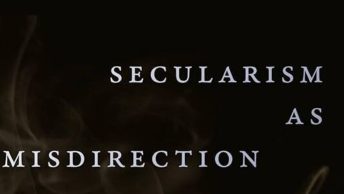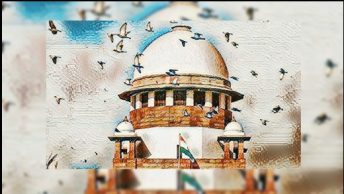(Ed Note: Shahrukh Alam’s review is the fifth post in our blog’s round-table book discussion on Prof. Jeff Redding’s A Secular Need: Islamic Law and State Governance in Contemporary India moderated by Prof. Rohit De. The introductory post and links for other responses can be found here. This is Part II of the two-part post; Part I can be found here).
Much of this book is about Divorce in one way or another
“A Secular Need’ – Jeffrey Redding
** Note 2: This essay was due months ago. The delay is in part due to the affect-laden series of ruptures caused to ideas of belonging that have unfolded in the last one year, with the advent of the Citizenship Amendment Act (CAA), but also more particularly in the Pandemic infested months, during which the state has declared opposition to the CAA, or claims of discrimination by Indian Muslims, as untruthful, seditious acts. [See the infamous FIR 59/2020]
Jeff’s work traces in great detail both ‘violent-violence’ and quotidian anti-Muslim violence [Pages 9-15], yet it suggests that there was space, too, for absorptive love, love-hate, and for the secular state to ask non-state Muslim institutions for help with certain material needs. Perhaps it is entirely subjective, but as I read him on secular/ absorptive love and on secular need, it seemed to me that even this precarious relationship has already, abruptly reconfigured itself in the past months. The affairs on the ground are reminiscent of a bitter, fault-based divorce, where only one strident side seems to want it.
In our particular context, what were the limits of ‘secular love’, and what were the chances that ‘secular need’ could be refashioned at will? It’s a precondition of ‘life on the political margins’ it would seem from reading Veena Das and Deborah Poole (eds.) in “Anthropology in the Margins of the State” (2004). The book reimagines the notion of the modern state as a transparent and rational bureaucratic entity, and focuses, instead, on marginal spaces (both territorial and conceptual), which seem to inhabit a place of illegibility, partial belonging and disorder, vis-à-vis State prescriptions. The idea of the margin (amongst others) is seen as a periphery, which is a natural container for people/ practices seen ‘insufficiently socialized into the law’[1] (Das and Poole, 9). The signature/will of the state, which remains even more elusive to those on the margins, ‘oscillates between the rational and the magical mode’. It takes a life of its own in the lives and practices of communities. Das argues that “it is precisely […] because the bureaucratic-legal processes are not legible even to those responsible for implementing them, that the state can penetrate the life of the community and yet remain elusive”. This theoretical framing also puts into perspective Jeff’s expansion of the idea of ‘legal archives’ and Rohit’s discussion of it, where law is not just a precedent, but also reveals the structures and forces that inhabit the space between the written word and its application. (Redding; Page 26, 27).
To be sure, the will (or secular need) of the state is mediated by the community, in the sense that it partially constitutes it, as it is in turn constituted by it (Redding; Pages 96, 97). At the same time, life on the margins, in relation to state/politics, is always precarious. The state defines its domain of influence by excluding certain aspects of life, or certain communities even, from itself. However, the containment of that which must remain outside is part of the state’s need. In the sense that they are policed by the state, margins are simultaneously spaces of exclusion and inclusion (state scrutiny and interventions).
I would offer that dar-ul-qazas may also be looked at as margins to contain that which the secular state won’t own, but also that their status was always tenuous and valid only until the time that the political membership of Indian Muslims was again ‘reconstituted through special laws as populations on whom new forms of regulation can be exercised’. Professor Farzana Haniffa expresses a similar thought in her review, when she poses a question about the historical contingency of the secular state.
I further offer that the Citizenship Amendment Act (CAA) – both in its formal sense, and also in its ‘illegibility’ – is a special law that ‘redraws boundaries so that those who were secure in their citizenship can be expelled or reconstituted as different kinds of bodies’. (Das and Poole, Pages 12,13).
It must also be said that although the affective impact of the CAA/ NRC has been borne by Indian Muslims (and by secular liberals/ leftists), its material effects would disproportionately be borne by migrant and poorer communities, both Muslim and non-Muslim. The creation of the citizenship register in Assam, mediated by ideology, but equally by law and bureaucratic procedure, mostly left out those on the social and economic margins. Thus, the impact of the ‘reconstitution of bodies’ is differentiated along the affective and the material axes.
Populations may well be reconstituted again, in more inclusive ways, in the due course of things. That is what we hope for, and struggle for. However, in this moment, in the aftermath of CAA, has ‘secular need’ reconfigured itself?
Amongst Jeff’s formulations, ‘secular need’ is both ideological and material. The first has to do with the secular credibility of the Indian state, and the latter with its need to form bridges with the ‘Muslim community’, quick access to it, if even to contain disorder. A second material need is to do with resolving disputes informally, so that they don’t crowd the already over-burdened formal legal system.
I wish to consider these secular needs in the context of the widespread anti-CAA protests in the country, particularly in the context of Shaheen Bagh, which was led by women who demanded a hearing of their grievances.
The calls for engagement by protestors were repeatedly repudiated; such an expectation was itself dubbed disruptive and mischievous. No political leadership, whether representative of the Central government or of the state government, offered to meet with the protestors. Neither did the local administration, which is normally the first point of contact between protestors and state during all manner of protests.
In this instance, the state did not feel the need to build bridges, to call upon non-state Muslim institutions, or community mediators, the ‘sarkari musalman’ even (whom the Pasmanda discourse decries as allies of the savarna state). It let things come to a boil and result in large scale violence, directed mostly at Muslims.
Certain ostensibly private parties went to Court with respect to the protest at Shaheen Bagh, complaining that the protestors were blocking public spaces and praying that they be evicted. The Supreme Court appointed two interlocutors who went to speak to the protestors and urged them to vacate the space. They also spoke to other ‘stake-holders’ – local police officials, local men who imagined that they would be able to convince the women to vacate, but were unsuccessful. On the other hand, in public meetings with the interlocutors, the protestors themselves repeated that they wanted some acknowledgement of their grievances: that they had not been heard on the question of CAA and its attendant procedures, which fundamentally altered their status; they had also wanted an enquiry into the incident of police brutality on protesting students in the nearby Jamia Millia Islamia University. The interlocutors may have recorded this in their report to the Supreme Court, but it is not reflected in the Court’s judgment. Eventually, the protestors were vacated, even as the case was pending before the Supreme Court, in the aftermath of new rules for a ‘lockdown’ having been promulgated in view of the Pandemic.
The state did not seem interested in informal spaces for dispute resolution, at least not on terms that gave any recognition to the protestors. Although community leaders and senior residents were not called upon to mediate then, they have now been rounded up – in addition to student leaders and other organisers – as co-conspirators in acts of disruption, sedition and organised violence.
Once again, a large majority of those who materially suffered in the violence that was orchestrated to disrupt the protests, as well as those now implicated as ‘original sinners’ for having participated in protests that allegedly provoked people into rioting, are peshewar (working) men. Of course, there have been other very deliberately visible arrests too, in order to make a political point. These include the ashraf leadership, and also non-Muslim liberal participants in the protests.
The Jamiat-al-Ulema-e-Hind (JUH) and the Jamaat-e-Islami-e-Hind (JIH) have both been very visible in the community, in picking up the pieces in the aftermath of the violence. They have helped with rehabilitation and reconstruction work, to complement the assistance from the state. The objet petit a appears inverted and now inhabits the non-state institutions in their relationship with the secular state.
In conclusion, the forms of engagement with non-state community actors has changed: we now hear of ‘approvers’, ‘informers’ and ‘protected witnesses’, although one might argue that the state is still policing its margins.
I’ll end on a rather eccentric note, which is to quote from Shahid Amin’s “Event, Metaphor, Memory” (2006) about the colonially constructed legality of an ‘approver’, a person simultaneously on the inside and outside of law. Henry Sleeman, the legendary colonial ‘thug-catcher’, apparently created the concept. He believed that ‘thugs’ belonged to closed fraternities, and therefore employed some men from within the group to incriminate others. Thus ‘approvers’ were employed by the Thagi and Dacaiti Department in the 1890s at a pay of Rs.4 a month. In time, the idea of the extra-legal approver also travelled to the American colonies: “in Virginia, if a person indicted for treason or any other felony confessed, made accusations against his accomplices and had them successfully convicted, ‘the approver’ received his pardon. If his testimony failed to achieve the task for which it was fabricated and the felon-accomplices were acquitted, the approver took their place at the gallows.” (Pages 80,81)
The figure of the approver, whether in its starkly brutalized forms, or better-accommodated ones, remains, regardless, on the margins. I am deeply interested in re-thinking this idea on the basis of the alternate imagination in Jeff’s work, or the possibilities shown by Shaunna and Farrah.
[1] Perhaps this is one way of thinking about the question posed in the book: “ Why Muslims and their legal conventions continue to be so politicized in post-partition India?”






Thank you very much for sharing, I learned a lot from your article. Very cool. Thanks.
Can you be more specific about the content of your article? After reading it, I still have some doubts. Hope you can help me. https://www.binance.info/pl/register-person?ref=YY80CKRN